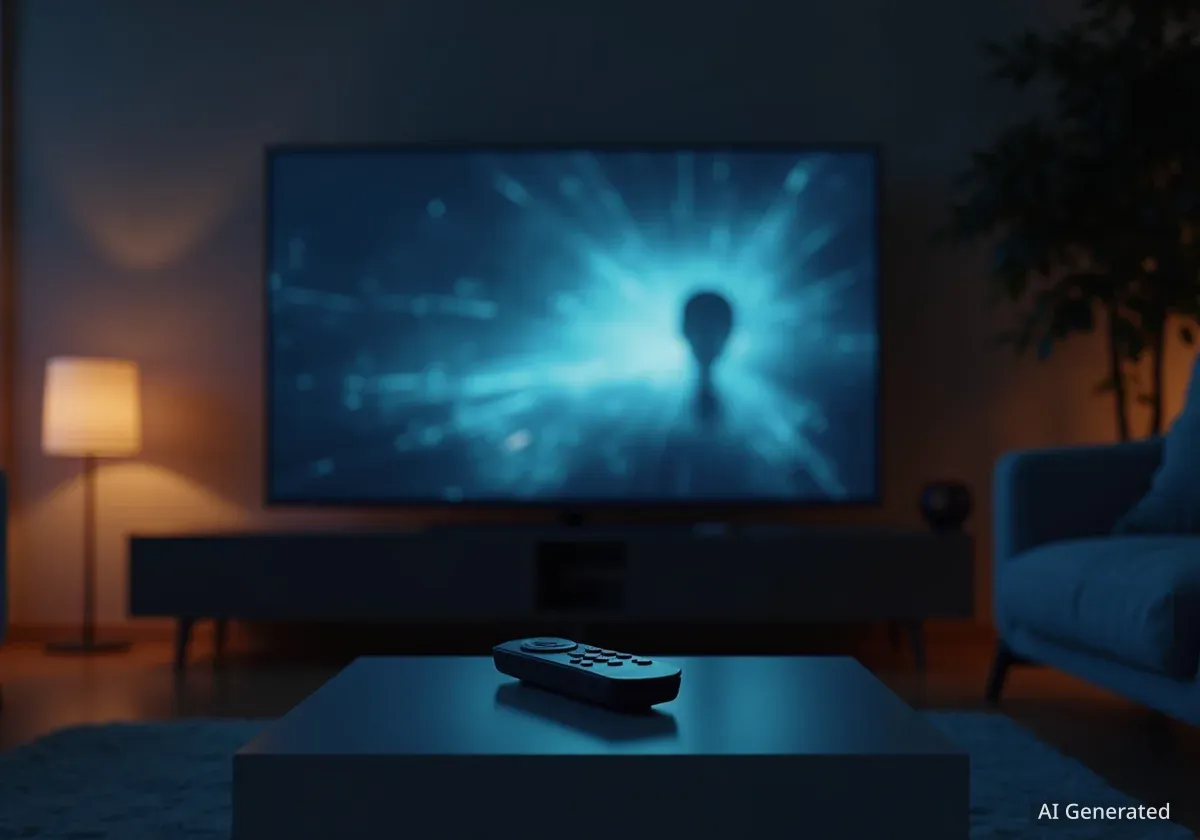DirecTV plans to introduce artificial intelligence-generated advertisements on the screensavers of its Gemini streaming devices starting in early 2026. The new feature, developed in partnership with advertising technology firm Glance, will allow users to create digital avatars of themselves to interact with personalized brand content and virtual product catalogs directly on their televisions.
Key Takeaways
- DirecTV will replace default screensavers on its Gemini streaming devices with AI-generated ads in early 2026.
- The feature is a partnership with Glance, an ad-tech company specializing in lock screen and smart surface content.
- Users can create a personal AI avatar to virtually try on products and engage with interactive brand experiences.
- The move is part of DirecTV's strategy to diversify revenue as its traditional subscriber base declines.
New Advertising Experience for DirecTV Customers
DirecTV has confirmed a partnership with Glance to bring a new form of advertising to its streaming hardware. Beginning in early 2026, customers using the company's Gemini Air streaming stick or Gemini set-top box will see AI-generated content and advertisements when their television is idle for 10 minutes. This will replace the current default Google wallpapers that serve as screensavers on the devices.
The Gemini devices, first launched in 2023, operate on the Android TV platform. The Gemini Air is a USB-powered device that provides access to live TV and streaming apps without requiring a satellite connection. DirecTV provides this device to all of its internet customers, expanding the potential reach of the new advertising platform.
Background on Glance
Glance is an Indian advertising technology company owned by InMobi, a mobile advertising firm with a history of user tracking. Before its push into smart TVs, Glance gained prominence by delivering ad-supported content and news to the lock screens of smartphones, including a recent partnership with Samsung. The company's business model focuses on monetizing screen space that is not actively in use.
How the AI Avatars and Ads Will Work
The core of the new screensaver experience is the ability for users to create a personalized AI avatar. By scanning a QR code displayed on the screen with a smartphone, a user can generate a digital version of themselves. This avatar becomes the central element for interacting with the advertising content.
Once an avatar is created, users can browse through various AI-powered experiences. For example, they will be able to place their avatar into a brand's digital catalog to see how clothing or accessories might look. According to Glance, this feature aims to create a highly personalized and interactive shopping experience from the living room.
Vast Product Matching Capability
Rajat Wanchoo, Glance's Group VP of Commercial Partnerships, stated that the company has access to a database of over a trillion SKUs (stock keeping units) that it can match to AI-generated images, enabling a wide range of product recommendations.
Purchases will not be completed on the TV itself. Instead, the transaction will be finalized on a separate device like a smartphone. In addition to shopping, users will also be able to create short, 30-second AI-generated videos featuring their avatar. The screensavers will also display practical information such as real-time weather updates and sports scores.
Data, Personalization, and User Tracking
The platform is designed to learn from user behavior to deliver tailored recommendations. In a March blog post, Glance's VP of AI, Ian Anderson, explained the function of the company's avatars.
Glance's avatars “analyze customer behavior, preferences, and browsing history to provide tailor-made product recommendations, enhancing engagement and conversion rates.”
This data-driven approach is central to the partnership's goal. Naveen Tewari, Founder and CEO of Glance, said the screensavers will allow people to “instantly select a brand and reimagine themselves in the brand catalog right from their living-room TV itself.”
For DirecTV, the objective is to enhance user engagement through personalization. Vikash Sharm, SVP of Product Marketing at DirecTV, stated that the technology is expected to aid in "content discovery" and provide a more personalized experience for viewers.
While the feature introduces a new level of interactive advertising, it also raises questions about data privacy, given the history of Glance's parent company, InMobi. However, reports indicate that users will have the option to disable the Glance screensaver feature if they prefer not to use it.
Strategic Shift Amid Industry Changes
DirecTV's adoption of AI screensaver ads reflects a significant strategic shift for the company and the broader streaming industry. The satellite and pay-TV provider has faced a steep decline in subscribers over the last decade. In 2015, the company had over 20 million subscribers; by 2024, that number had fallen to approximately 11 million, according to a report from Next TV.
This decline has made it crucial for DirecTV to find new revenue streams beyond traditional subscriptions. The company has already experimented with other ad formats, such as displaying ads when a user pauses content. The move toward monetizing idle screen time is seen as a logical, if potentially unwelcome, step for some customers.
The Rise of Ad-Supported Streaming
The entire streaming industry is increasingly reliant on advertising. Major services like Netflix, Disney+, and Max have all introduced lower-cost, ad-supported subscription tiers to attract and retain customers while boosting revenue. For many companies, advertising revenue is now as important as subscriber growth.
This new venture with Glance could be just the beginning. Glance COO Mansi Jain suggested that the technology is not limited to screensavers. She told The Verge, “This, we can integrate across different places within the television. We are starting with the screensaver, but tomorrow… we can integrate it in the launcher of the TV.” This indicates a potential future where such interactive, personalized ads could become a more integrated part of the smart TV user interface.





